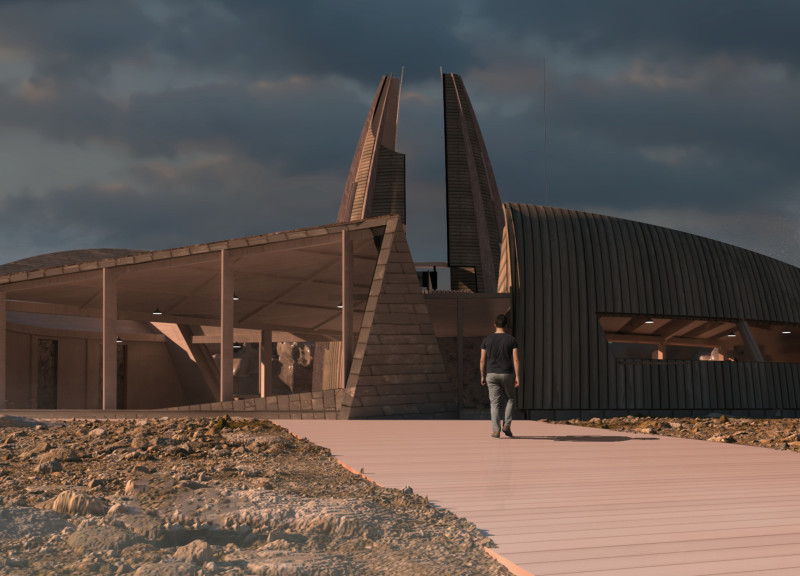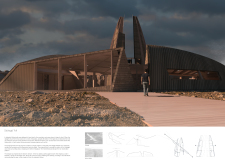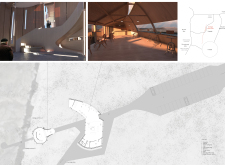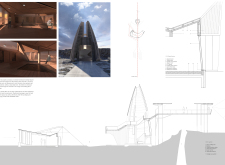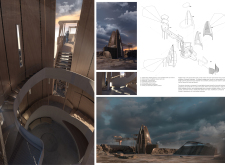5 key facts about this project
The project at Grjótagjá is located at the meeting point of the Eurasian and North American tectonic plates in Iceland. It aims to serve as a visitor center and an observation point, helping people connect with both the dramatic landscape and local folklore about trolls. The design reflects the geological forces at work in the area, transforming these natural elements into a journey for visitors to explore.
Conceptual Framework
The main idea behind the design is based on the geological tension created by the shifting tectonic plates. This concept influences how the space is arranged and how visitors experience it. The tower, which stands above the Grjótagjá cave, acts as a visual landmark that ties together the landscape and troll mythology. By merging these elements, the architecture encourages visitors to engage more deeply with the surrounding environment and its stories.
Spatial Configuration
Several essential features enhance the experience for visitors, including a waiting area, café, and observation platforms. These spaces are thoughtfully positioned to offer broad views of the Icelandic landscape, allowing for quiet moments of contemplation. The observation tower has multiple levels, culminating in a viewing platform that extends over the fissure between the tectonic plates. This vantage point enables visitors to fully appreciate the geological beauty of the area.
Material Selection
Materials play an important role in the design, contributing to both function and appearance. The use of Glulam beams and columns for the framework of the visitor area and café ensures strength while maintaining a welcoming look. Cladding in Siberian larch and volcanic stone gives the building an appearance that fits well with its natural surroundings. Inside, cross-laminated timber (CLT) provides a bright finish that reflects Nordic light positively.
Environmental Considerations
The design includes a focus on sustainability, incorporating geothermal energy for heating and using underground springs to supply water. By keeping these environmental factors in mind, the architecture not only performs well but also reinforces a connection to the local ecosystem. These design choices help ensure that the building can withstand Iceland’s difficult weather while fitting into the broader landscape.
The observation tower, with its carefully arranged levels and viewing spots, encourages visitors to seek out the stunning vistas. It also invites individuals to reflect on the geological process that created this remarkable location, deepening their appreciation for both the land and its rich history.


